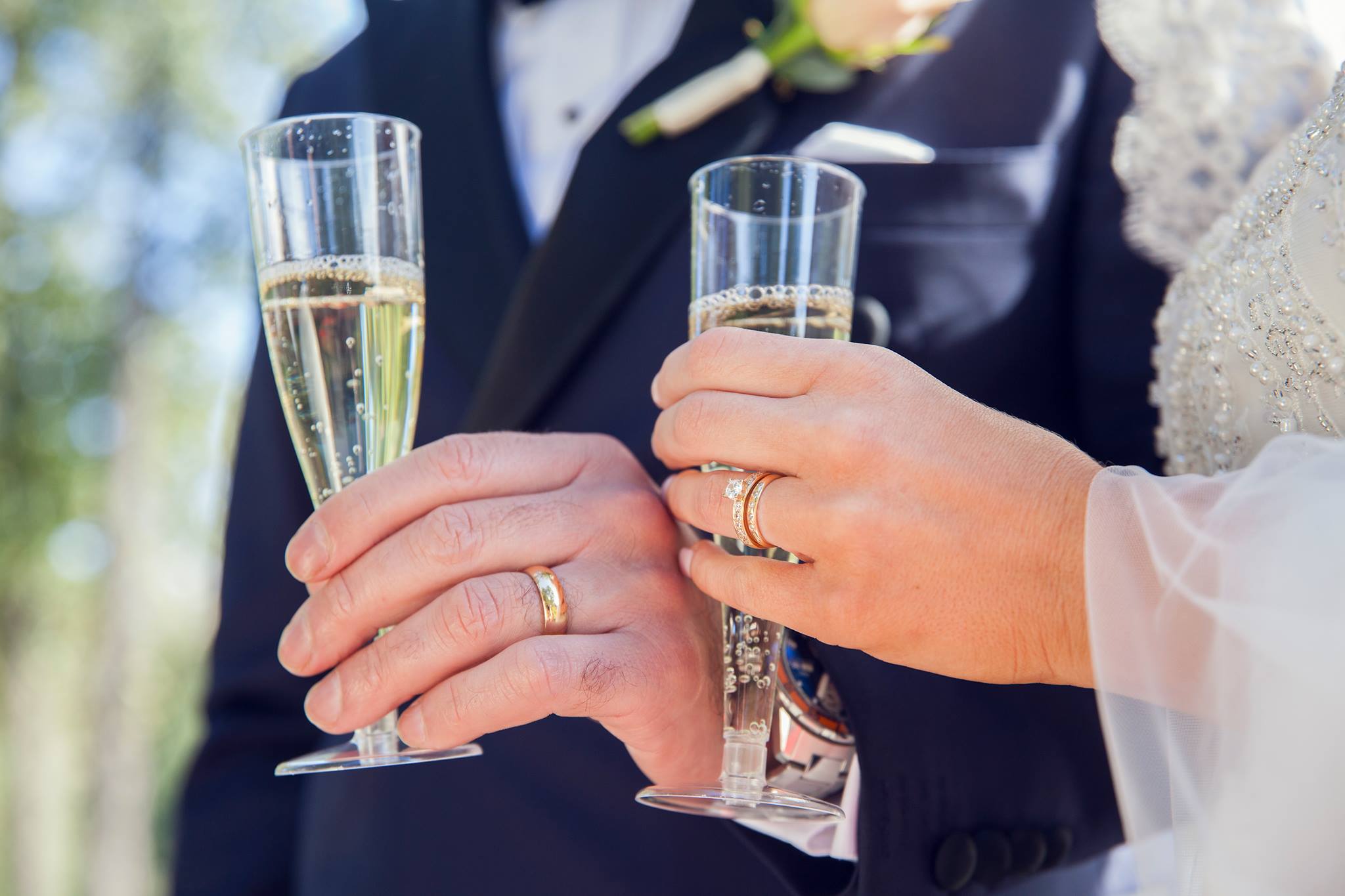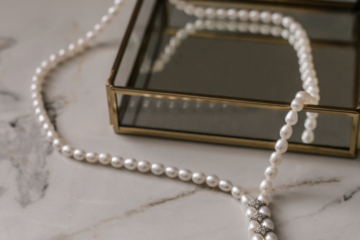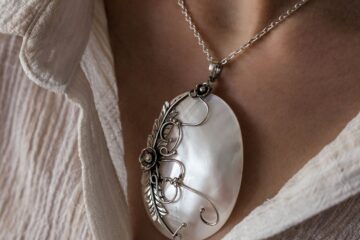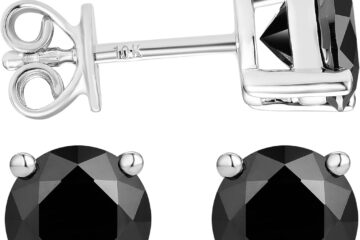The Swedish wedding ring finger is typically the fourth finger, also known as the “Vena Amori.” In Sweden, like in most countries, wedding rings are worn on the left hand.
However, in some countries like France, Italy, and Scotland, wedding rings are worn on the right hand. The choice of hand for wearing wedding rings can vary depending on culture and customs.
The Significance Of The Swedish Wedding Ring Finger
When it comes to weddings, different cultures have their own unique traditions and customs. In Sweden, one of the most interesting aspects of a wedding is the placement of the wedding ring. The Swedish wedding ring finger is typically the fourth finger, also known as the ring finger. This tradition is rooted in the belief that the ring finger is connected to the heart, making it the perfect symbol of love and commitment. In fact, this finger is often referred to as the “Vena Amori,” which translates to “vein of love.”
The Fourth Finger: Symbolism And Cultural Beliefs
The choice of the fourth finger as the Swedish wedding ring finger is not limited to Sweden alone. Greeks, too, believe in the symbolism of the ring finger and its connection to the earth. This belief is deeply ingrained in their culture and is a testament to the power of traditions passed down through generations.
Alongside the Greek culture, the Swedish wedding ring finger holds its significance in the belief that love flows through the “Vena Amori,” or the vein of love. This vein is said to run directly from the fourth finger of the left hand to the heart, symbolizing the deep emotional connection between two individuals.
The choice to wear the wedding ring on the fourth finger is not without exceptions. In some European traditions and cultures, including many Orthodox ones, the ring is worn on the left hand before marriage and then transferred to the fourth finger of the right hand after the wedding ceremony.
However, in Sweden, as well as in most other countries, the tradition of wearing the wedding ring on the left hand remains strong, symbolizing unity, commitment, and eternal love.
By wearing the wedding ring on the Swedish wedding ring finger, couples not only show their commitment to each other but also honor the rich history and cultural beliefs that have shaped this tradition.
Differences In Ring Placement In Norway And Sweden
In Sweden, the wedding ring is typically worn on the fourth finger of the left hand. Known as the “Vena Amori,” or vein of love, this tradition dates back centuries. However, it’s important to note that there may be exceptions to this rule in certain situations.
Norwegian Traditions: Rings On The Right Hand
In Norway, it is a long-standing tradition to wear the wedding ring on the right hand. This practice sets it apart from its neighboring country, Sweden, and many other countries where wedding rings are typically worn on the left hand. The significance of wearing the ring on the right hand in Norway is deeply rooted in cultural beliefs and customs.
Swedish Traditions: Rings On The Left Hand
When it comes to Swedish traditions, the wedding ring is usually worn on the left hand, just like in most other countries. The Swedish people believe that the fourth finger of the left hand, commonly known as the ring finger, is directly connected to the heart. This finger is often referred to as the “Vena Amori,” which translates to the “vein of love.” By wearing the wedding ring on this finger, Swedes symbolize the deep love and connection between married partners.
Exceptions To The Rule
While the general tradition in Norway and Sweden is to wear the wedding ring on the right and left hand respectively, there are always exceptions to the rule. In some European traditions, including several Orthodox practices, the ring is worn on the left hand before marriage and then transferred to the right hand after the wedding ceremony. Additionally, customs within specific regions or religious affiliations can also influence the placement of wedding rings. It is important to remember that traditions may vary, and personal preferences also play a significant role in determining where individuals choose to wear their wedding rings.
Ring Placement In Different Countries And Cultures
In Swedish wedding traditions, the wedding ring is typically worn on the fourth finger of the left hand. This finger is believed to be connected to the heart and is commonly known as the “Vena Amori” or “vein of love”.
When it comes to wedding traditions around the world, one interesting aspect to explore is the placement of wedding rings. Different countries and cultures have their own unique customs when it comes to which hand and finger the wedding ring should be worn on. In this section, we will delve into the ring placement practices of European women, Jewish couples, and male royal family members.
European Women: Rings On The Right Hand
European women have a tradition of wearing their wedding rings on the right hand. Unlike many other cultures that opt for the left hand, European women choose to adorn the ring finger of their right hand with their wedding bands. This tradition can be seen across various European countries, such as Sweden, Norway, and even some Orthodox traditions.
Jewish Couples: Rings On The Right Hand
For Jewish married couples, it is customary to wear their wedding rings on the right hand instead of the left hand like non-Jews. This tradition is deeply rooted in Jewish customs and has its own historical significance. The wedding ring is a symbol of commitment and love for Jewish couples, and wearing it on the right hand is seen as a way to differentiate their marriage from that of non-Jews.
Male Royal Family Members: The Lack Of Wedding Rings
In contrast to many other individuals, male members of royal families often do not wear wedding rings. This practice is not a cultural norm, but rather stems from the tradition and expectations associated with their royal status. The lack of wedding rings among male royal family members can be attributed to various factors, including different interpretations of tradition, societal expectations, and the unique circumstances that come with being a public figure.
While there are variations in ring placement customs across the globe, it is important to appreciate the diversity and significance behind these traditions. Whether it is European women opting for the right hand, Jewish couples adhering to their religious customs, or male royal family members following their own expectations, the choices made regarding wedding ring placement hold deep personal and cultural meanings.

Credit: www.yourlivingcity.com
Common Ring Finger Practices In Europe
When it comes to wedding traditions, Europe is a melting pot of diverse customs and practices. One interesting aspect of European wedding traditions lies in the placement of wedding rings on the finger. Let’s explore the common ring finger practices in Europe and discover the symbolism behind them.
European Traditions: Left Hand Before Marriage
In some European traditions, including many Orthodox ones, the wedding ring is worn on the left hand before marriage. This practice is often seen in countries like Sweden, where engagement rings are traditionally worn on the ring finger of the right hand. The left hand is believed to have a closer connection to the heart, symbolizing the bond of love and commitment between the couple.
Swedish wedding ring finger customs have a unique twist. The fourth finger, also known as the “Vena Amori” or “vein of love,” is considered the designated finger for wedding rings. This belief can be traced back to the ancient Greeks, who believed that a vein connected this finger directly to the heart. Therefore, many Swedish couples choose to wear their wedding rings on their left hand’s fourth finger, solidifying their love and connection.
Transferring Rings After Marriage
Once the marriage ceremony is complete, some European traditions involve transferring the wedding ring to the right hand. This ritual signifies the shift from engagement to marriage and symbolizes the joining of two individuals into one united entity. In countries like Norway, it is customary to wear the wedding ring on the right hand after the wedding ceremony. However, it’s important to note that these customs may vary, and there are exceptions to every rule.
It’s fascinating to discover the different ring finger practices across Europe, each with its unique symbolism and cultural significance. From the left hand before marriage to the transfer of rings after marriage, these customs create a beautiful narrative of love and commitment. Whether you choose to follow these traditions or forge your own path, the most important aspect of a wedding ring is the love and bond it represents between two individuals.
The Doctoral Ring Tradition In Sweden
In Sweden, there is a unique and special tradition surrounding the wearing of rings. One such tradition is the doctoral ring, which holds great significance in the country. Traditionally, the doctoral ring is worn on the left hand’s ring finger, on top of the engagement or wedding ring. This placement symbolizes the academic achievement and status of the individual who has earned their doctorate degree.
Traditional Placement: Left Hand’s Ring Finger
In Sweden, the left hand’s ring finger is considered the traditional placement for wedding rings and other significant rings. This tradition is deeply rooted in the belief that the ring finger is connected to the heart. The Greeks even go as far as calling that finger the “Vena Amori,” translating to the “vein of love.” Therefore, Swedish couples often choose to place their wedding rings on the left hand’s ring finger as a symbol of their love and commitment to each other.
Interaction With Engagement And Wedding Rings
When it comes to the interaction between the doctoral ring and other rings, such as engagement and wedding rings, the doctoral ring takes a prominent position. It is customary for the doctoral ring to be worn on top of the engagement or wedding ring, symbolizing the academic achievement’s significance. By placing the doctoral ring on the left hand’s ring finger, on top of the engagement or wedding ring, individuals proudly display their hard-earned doctoral status alongside their commitment to their partner.
In conclusion, the doctoral ring tradition in Sweden is a unique and meaningful way to honor academic achievements. By wearing the doctoral ring on the left hand’s ring finger, on top of the engagement or wedding ring, individuals showcase both their commitment to their partner and their scholarly accomplishments.
Various Customs And Stories Surrounding Swedish Wedding Rings
In Swedish wedding customs, the wedding ring is typically worn on the fourth finger, also known as the “Vena Amori” or “vein of love. ” However, there are exceptions to this rule, with some wearing the ring on the right hand instead.
Swedish engagement rings are traditionally worn on the ring finger of the right hand.
Incorporating Tradition: Engagement Rings On The Right Hand
In Swedish wedding traditions, engagement rings hold a special significance and are typically worn on the ring finger of the right hand. This custom, steeped in history, has been practiced for centuries. By wearing the engagement ring on the right hand, couples in Sweden honor the journey leading up to marriage and symbolize their commitment to each other.
Swedish Wedding Traditions And Customs
When it comes to Swedish wedding customs, the country boasts a rich tapestry of unique traditions and captivating stories surrounding wedding rings. Here are some interesting customs:
1. Dual Engagement Rings:
In Sweden, it is traditional for both men and women to wear engagement rings. This custom reflects the egalitarian values deeply ingrained in Swedish culture, where both partners are equally committed to their relationship.
2. Gold Bands as Engagement Rings:
The traditional Swedish custom involves purchasing gold bands as engagement rings for both men and women. These rings are worn on the right hand’s ring finger and serve as a symbol of love and commitment.
3. Additional Diamond Rings or Plain Bands:
After the engagement, Swedish couples often add another diamond ring or a second plain band to their ring finger to signify their impending marriage. This additional ring adds a touch of sparkle or simplicity, depending on individual preferences.
4. Wearing Wedding Rings on the Left Hand:
The wedding ring, unlike the engagement ring, is typically worn on the ring finger of the left hand in traditional Swedish weddings. This aligns with the customs followed in many other countries. However, it is important to note that there may be exceptions to this rule, as traditions can vary among different regions and cultures within Sweden.
Swedish wedding rings are not just symbolic pieces of jewelry; they carry with them centuries of tradition, love, and commitment. By incorporating these customs into their special day, couples in Sweden embrace their cultural heritage and create a truly unforgettable celebration of love.
Frequently Asked Questions On Swedish Wedding Ring Finger
On Which Hand Do Swedes Wear Wedding Rings?
Swedes typically wear wedding rings on the fourth finger of their left hand, known as the “ring finger. “
What Is The Traditional Swedish Wedding Ring?
The traditional Swedish wedding ring is usually worn on the fourth finger, also known as the ring finger. This finger is believed to be connected to the heart and is known as the “Vena Amori” or the vein of love.
In Sweden, engagement rings are often worn on the right hand.
Which Countries Wear The Wedding Ring On Right Hand?
In Sweden, wedding rings are traditionally worn on the right hand. This is a common practice in countries like France, Italy, Scotland, and Belgium. However, it can vary depending on culture and location.
What Finger Do Orthodox Wear Their Wedding Ring?
In Sweden, the traditional finger to wear a wedding ring is the fourth finger of the left hand, known as the ring finger. This tradition symbolizes love and is connected to the belief that the ring finger is linked to the heart.
Conclusion
The Swedish wedding ring finger tradition is unique and holds special meaning. In Sweden, it is common for wedding rings to be worn on the fourth finger of the left hand. This finger is believed to be connected to the heart, also known as the “vein of love”.
However, it’s important to note that traditions can vary across different countries and cultures. Whether on the left or right hand, the significance of wedding rings remains a symbol of eternal commitment and love.



